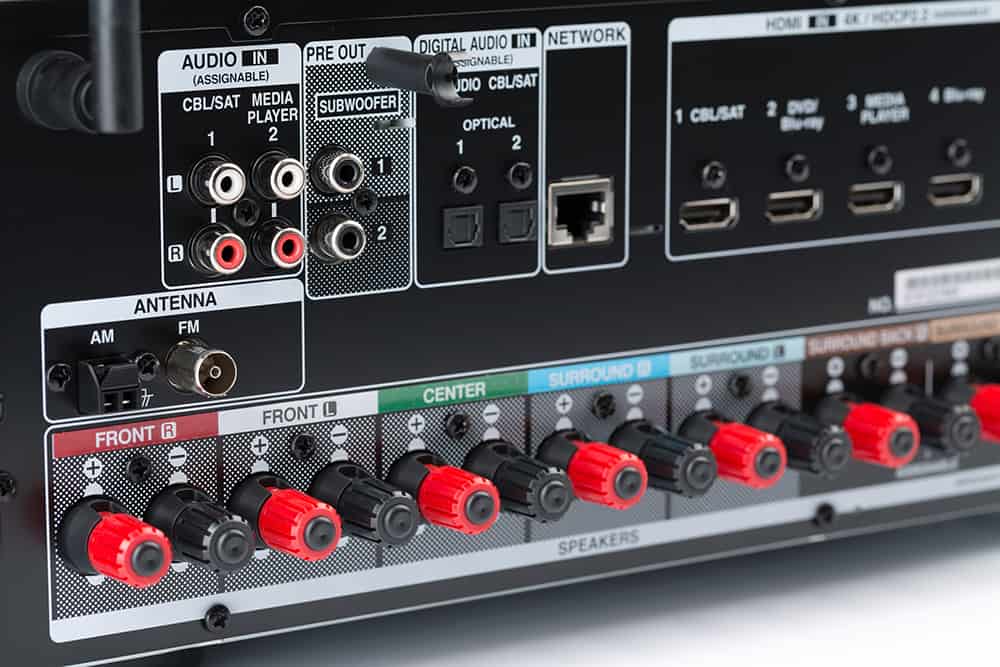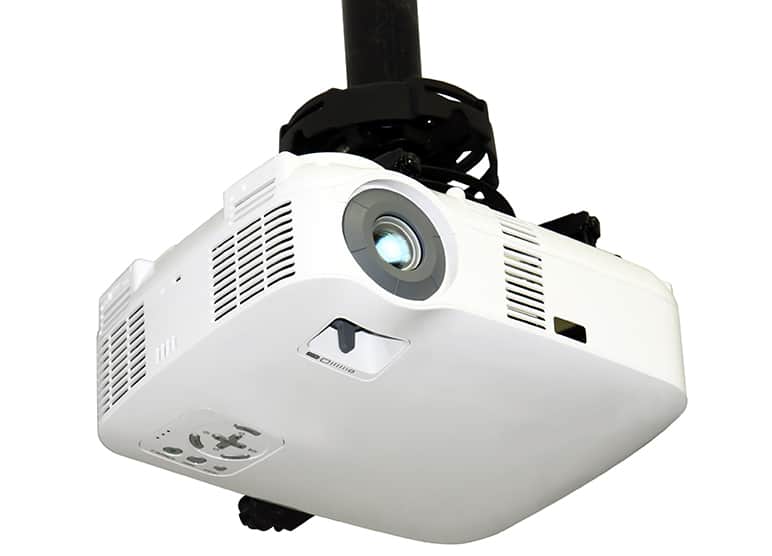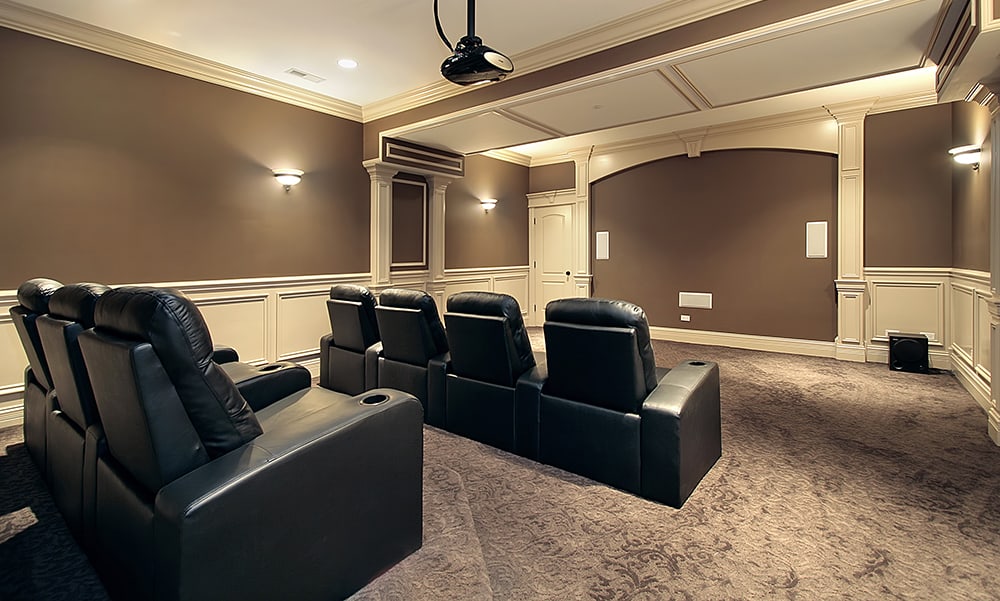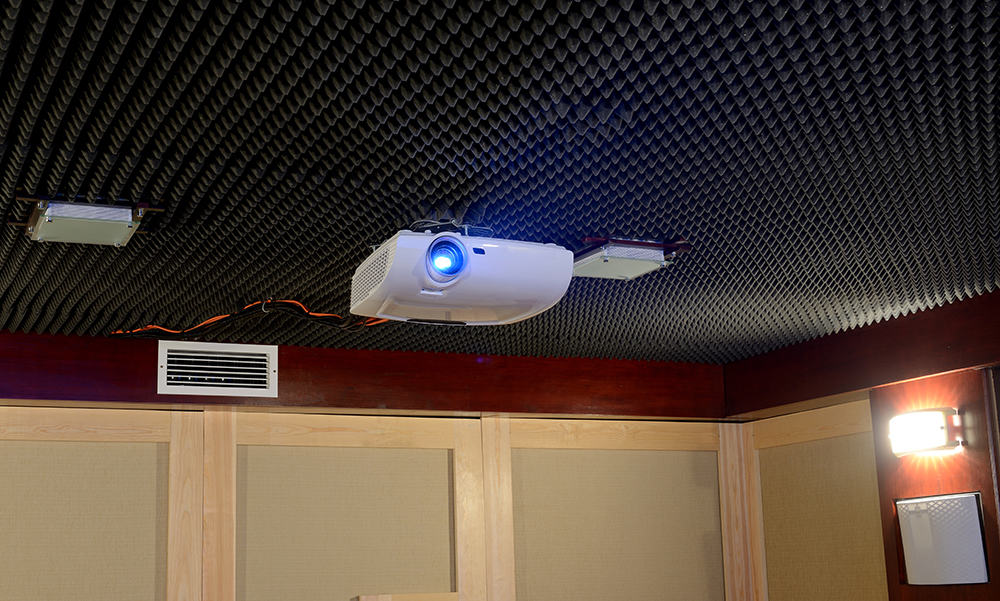Before beginning the construction and setup of your home theater, it is wise to calculate the price of fixtures, fittings, along with all other associated costs.
Setting a budget and adhering to it ensures that you will get the best of everything that your money can buy.
An overspend in one area of the theater can result in drastic cost-cutting in another section. This may be to the detriment of the audio/visual quality and spoil the overall experience for the viewers.
It can cost as little as $500 to upgrade your existing TV with a home theater in a box kit and a set of blackout drapes to cover doors and windows.
For those of you with bigger ideas, the national average spend is between $5000 and $50,000.
Any building works account for the initial spend. Once the shell of the room is complete, there is a seemingly unending list of tasks and equipment required before the theater is ready to use.
Soundproofing, wiring, lighting, and the salary of qualified technicians to carry out the work is a significant amount. Purchasing all of the required equipment is a significant additional expense. The sound and projection systems, along with the seating and other interior furnishings bump up the overall spend.
Let's take a look at individual components of a home movie theater and their projected costs.
We are going to assume that you're interested in designing a room specifically to be used as a movie theater or an impressive video gaming room.
An existing room of around 15ft x 12ft that you want to repurpose is a good point to work from.
The basis of every theater room. Not only does it prevent stray sound from escaping, it also keeps all of the best sounds in the room.
Soundproofing is best installed during construction and comes in multiple guises, many of which are effective when added in the post-build stage.
Additional mass and density, decoupling, damping, and absorption are the main soundproofing methods to eliminate both airborne and structure-borne noise.
There are many methods to choose from to fit all budgets.
Acoustic conditioning deals with the way sound moves around the room. Treatments ensure the best possible audio is achieved by reducing echo, reverberation, and crosstalk.
Large 4K TVs might suffice in a living room environment, but for a home theater, we recommend a projector and projection screen. The bigger dimensions of the screen will closer assimilate a true cinema experience.
A method from which you transmit movies such as DVD, Blu-ray, games console, or a streaming device such as a Firestick or Apple TV.
The system of speakers that best project the audio around a room. Surround sound plays back accurately, as the moviemaker intended.
It consists of a series of speakers, the amount of which is usually decided by the size of the room. Typical size rooms require a 5.1 setup, which is 5 speakers and 1 subwoofer in a specific configuration. Larger rooms use two extra speakers in a 7.1 system.
The device where everything in the audio change connects before it is sent to the speakers.
Receivers often have an integrated equalizer to mix the settings to meet your preference.
Some sound chains require an amp to boost the sound before it reaches the speakers. However, many high-end AV receivers have integrated amps and pre-amps.
Although some components have the compatible cables included, but not all. HDMI, RCA, VGA, or Digital Audio cables are available separately, as is the wire needed to connect the speakers.
A small part of the attraction of going to the movies is the comfortable seating, particularly if they're reclining chairs. A row or two of theater-style seating is the best way of achieving the cinema feel and look at home.
We endeavor to give approximate costings of every component that goes together to create a home theater studio. In each category, we provide a price for each budget range: basic, mid-range, and high-end.

The operations center through which all audio and visual signal pass. In our opinion, you should break the bank to get the best receiver that you can afford, one that is compatible with every device that you use.
Budget - $149
It will do the job, but there will be many better models out there.
Mid-range - $200 -$500
Models in this price range are very adequate and possess most of the latest features.
Premium - $500 - $2000+
Top-of-the-range receivers have the latest technology on board, such as AirPlay compatibility, allowing wireless streaming of music.
Whichever AV receiver fits your budget should have enough input and output ports as possible, not just for all of your current equipment, but for any future additional devices.
It should have a high wattage; great power doesn't mean louder, it means a more dynamic and detailed sound.
It should be user friendly, particularly for novices, and ideally have Auto speaker calibration to take the hard work out of the setup.

A situation where bigger is better. If the room allows it, a screen size of 120" upwards is optimal. A projector almost always beats a TV screen in a home theater setup. An HD TV with a screen approaching anything like the size of a projection screen would cost several thousand dollars too.
Budget - $300
Don't be perturbed by some lower budget projectors, the best models offer lightweight flexibility and wired or wireless inputs.
Their lower lumen count makes them most compatible with only the darkest of rooms and the image resolution is not as good. However, they can still represent good value for money.
Mid-range - $1500
Projectors with higher lumen values fall into this category, their additional brightness helps them to cope with ambient light issues.
For this price expect 4K resolution, excellent contrast, and full-color vibrancy.
Premium - $4000
For the best cinematic experience and the most dynamic, accurate, and consistent images, look for the best quality projector possible. Projectors in this range provide the most stunning, dynamic imagery with 4K resolution and ultra-fast frame speed.
Wireless HDMI transmitters allow for streaming from a wide range of devices.

Budget - $30
Good quality projection surface paint is inexpensive and effective, providing it is applied to a perfectly smooth surface. You are not bound by screen size; you can paint an area as big as the wall and the resolution of the projector will allow.
Mid-range -$200
Some very respectable screens are available in this bracket, usually in a choice of fixed, pull-down, or mechanical.
Premium - $1000
Many factors affect the price of screens. Depending on their design and fabrication, bigger screens might be more expensive but not strictly the best option. The overall look should be impressive without being overwhelming.
Those configured to screen Ultra-HD and 4K content are the most expensive, but only worth investing in if the projector is of an equally good caliber.
The type of screen also affects the cost, whether that be because it is a tripod screen that can be collapsed and stored after use, or a large pop-up or inflatable screen for portability.
Motorized screens look good but there are components within that are prone to failure.

Surround sound is the only way to go when trying to recreate that movie theater feel.
Systems vary in price, depending on setup, output, and brand.
Budget - $100+
It is possible to get a system for around this price, but please, if at all possible, don't do it.
The audio will appear distorted, tinny, and cheap.
Mid-range - $200 - $500
This is a fine place for a novice to start. Theater in a box kits provides 6 or 8 channel systems, cables, and installation instructions. The improvement in sound quality in comparison with a budget system is huge. Sound has depth, clarity, and it will be dynamic.
Premium - $5,000+
Personalizing your sound system is the most expensive way to go. Individual components don't come cheap and purchasing them requires a great deal of audio expertise.
Don't be fooled into opting for the big brand name, instead, compare specifications and reviews.

Budget - $300 per chair
Comfortable seating, available in varying colors and fabrics. Not the most luxurious on offer but still an excellent option.
Mid-range - $750
Your money buys you stylish leather reclining chairs with a docking area for drinks, snacks, and other accessories.
High-end - $1000 per chair
For around $1000 per chair, you can expect ultimate comfort and functionality. Motorized lumbar support, fully-adjustable recline, heated base, and headrests are just some of the luxuries afforded by their large price tag.
Expect enhancements such as charging docks, drinks holders, reading lights, and snack trays. Expect nothing but supreme comfort from these seats.
Investing in anything other than a Blu-ray player is pointless if you want the most realistic movie experience. Almost all models to suit any budget have 4K technology onboard.
Budget - $200+
If it's a Blu-ray player then expect excellent audio and visual quality, usually in 4K. Paired with a good projection system, a budget player can rival more expensive machines.
Mid-range - $500 or below
Superb devices, often with inbuilt wifi as well as 4K.
Premium - $800
Packed with the highest quality Dolby Vision for immaculate images and unrivaled audio, the top-of-the-range Blu-rays play 4K and 3D accurately and consistently.
Ambient lighting is the enemy of projection screens, however, there are times when even the darkest of theaters require a little lighting.
This is best achieved by installing a dimmer switch with remote control operation.
Cost – Less than $100, including bulbs
Wiring must be able to withstand the load and should therefore be at least 12 or 14-gauge. Sub-standard wire risks distorted sound.
Cost – Around $100 per 100ft.
The importance of carpets shouldn't be overlooked. Sound waves look for hard surfaces to reflect from, creating reverberation and echo.
Carpeting both floors and walls in a movie theatre ensure excellent audio and visual conditions.
Thermal curtains and blinds to block out unwanted daylight, increase the spending.
Cost - $2500
This covers carpet, underlayment, and fitting of a standard-sized room with a good quality covering.
Prices will decrease if you choose a different method of soundproofing the walls.
Round the whole thing off with a universal remote control to operate every device in the room. Most have an app that allows operation from a mobile phone.
Cost - $120

It is difficult to estimate the cost of soundproofing, it will vary by room size, the materials used, the extent to which the works are carried out, and if you're willing to pay a professional to do the work.
The best soundproofing is always to add mass or density to a room, such as drywall.
Materials are relatively inexpensive although the cost increases as more methods are used, such as decoupling and damping.
Cost - $500 - $2000
Based on our findings, and bearing in mind these are approximations, this table shows ballpark costs for a 6-seater home movie theater running a 5.1 surround sound system.
| Budget | Mid-range | Premium | |
| AV Receiver | $150 | $500 | $2000 |
| Projector | $300 | $1500 | $5000 |
| Screen | $30 | $200 | $1000 |
| Sound System | $100 | $500 | $5000 |
| Seating | $1800 | $4500 | $6000 |
| Media Player | $200 | $400 | $800 |
| Soundproofing | $500 | $1000 | $2000 |
| Lighting | $100 | ||
| Wiring | $100 | ||
| Carpets | $2500 |
All of these amounts are estimates based on the price of equipment and materials currently available. Our best advice is to set a budget and stick close to it.
With so many superb products available, it is easy to see costs spiral out of control.
Home theater costs are within the reach of many people, and expenditure can be reduced by looking at good quality, second-hand equipment, and calling in favors from friends in the trade.
